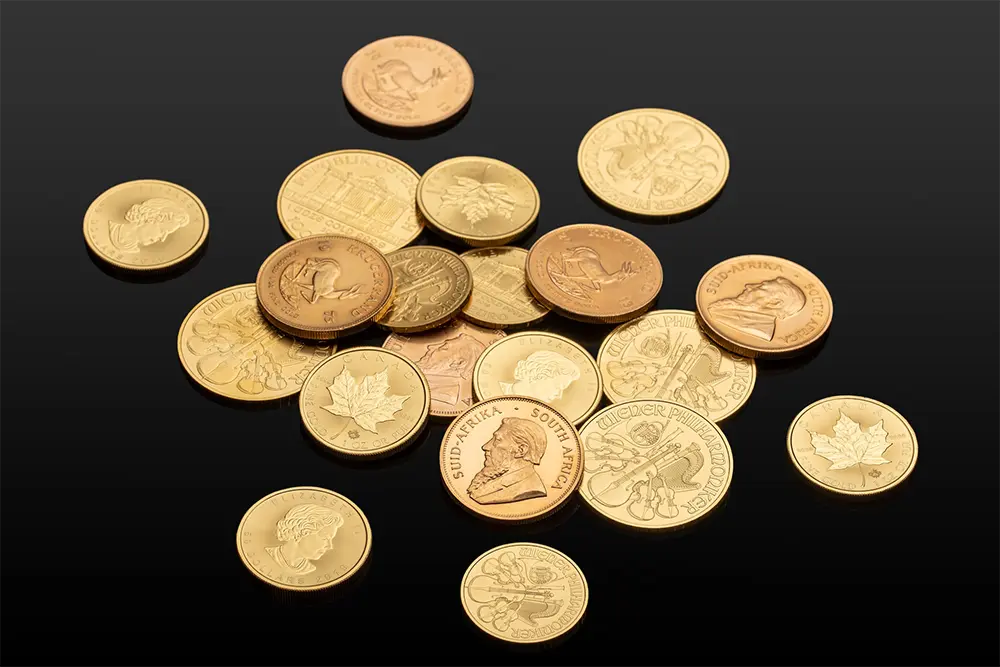Are you intrigued by the world of commodities trading? Curious about how gold futures work and what they can offer to investors? Look no further! In this beginner’s guide, we will delve into the fascinating history of gold and explore why this particular investment option has captured the attention of traders worldwide. From its origins in ancient civilizations to its modern-day significance, gold has always held a special allure. We will unlock the secrets behind the value and versatility of trading gold, and explain how they can be used to hedge against inflation, diversify portfolios, and potentially generate substantial profits.
A brief history of gold
Gold has been revered throughout history for its intrinsic beauty and value. From ancient civilizations to the modern-day, gold has been used as a form of currency, a symbol of wealth, and a store of value. The allure of gold dates back thousands of years, with evidence of its use in trade found in ancient Egypt, Mesopotamia, and China. The scarcity and durability of gold undoubtedly made it an ideal medium of exchange, with civilizations minting coins to facilitate trade. As time progressed, gold began to play a more prominent role in international trade, with the rise of empires and the establishment of global marketplaces. Today, gold remains a highly sought-after precious metal, with its value influenced by a myriad of factors such as supply and demand dynamics, geopolitical tensions, and economic indicators.
Gold futures, as a financial instrument, emerged in the 1970s in response to the increasing demand for a standardized way to trade gold on the commodity exchanges. The establishment of the Chicago Mercantile Exchange (CME) paved the way for the trading of gold contracts, providing investors with a regulated marketplace to buy or sell gold at a predetermined price and future date. The introduction of gold futures revolutionized the way investors could participate in the gold market, allowing them to speculate on the price movement of gold without the need to physically possess the metal. Today, gold futures are actively traded by individuals, financial institutions, and even central banks, making it undeniably one of the most liquid and accessible commodities in the financial markets.

What are gold futures?
Gold futures, as the name suggests, are contracts that obligate the buyer to purchase a specified amount of gold at a predetermined price on a future date. These contracts are standardized and traded on regulated exchanges, such as the CME. A single futures contract represents a specific quantity of gold, typically 100 troy ounces. The price of a gold futures contract is influenced by various factors, including the spot price of gold, interest rates, supply and demand dynamics, and market sentiment.
Trading gold futures provides investors with the opportunity to profit from the price fluctuations of gold without the need to own physical gold. By entering into a gold futures contract, investors can speculate on the future price movement of gold, with the aim of buying low and selling high. This flexibility and liquidity make gold futures an attractive investment option for both short-term traders and long-term investors.
Why trade gold futures?
There are several compelling reasons why investors choose to trade gold futures. Firstly, gold is often regarded as a safe-haven asset, meaning it tends to retain its value or even increase in times of economic uncertainty or market volatility. During periods of inflation, political instability, or financial crises, gold has historically served as a hedge against these risks. By trading gold futures, investors can take advantage of these price movements and potentially protect their portfolios from adverse market conditions.
Secondly, trading gold futures allows investors to diversify their portfolios. Gold futures have a low correlation with other asset classes, such as stocks and bonds, which means that when these traditional investments decline in value, gold futures may act as a counterbalance. By including gold in a diversified portfolio, investors can potentially reduce overall risk and increase the potential for long-term returns.
Thirdly, gold futures offer leverage, meaning investors can control a larger position with a smaller amount of capital. This amplifies potential returns, but it also increases the level of risk. It is important for investors to understand and manage this leverage effectively to avoid excessive losses.
How to trade gold futures
Trading gold futures involves several key steps. Firstly, investors need to open a trading account with a brokerage firm that offers access to gold futures. It is important to choose a reputable and regulated broker to ensure the safety of funds and the integrity of the trading platform.
After a trading account is set up, investors can begin analyzing the gold market to identify trading opportunities. This involves studying price charts, monitoring economic indicators, and staying informed about global events that can impact the price of gold. Technical analysis and fundamental analysis are common methods to analyze the gold market and make informed trading decisions.
After identifying a potential trade, investors can enter into a gold contract. It is important to carefully consider the contract specifications and understand the terms and conditions before entering into a trade.
Risks and benefits of trading gold futures
As with any investment, trading gold futures carries inherent risks. The volatility of the gold market can lead to substantial price fluctuations, resulting in potential losses for traders. Additionally, leverage amplifies both potential profits and losses, making risk management a crucial aspect of trading gold futures. It is important for investors to set realistic profit targets and stop-loss orders to protect against excessive losses.
Despite the risks, trading gold futures also offers several benefits. The liquidity of the gold futures market ensures that there is always a buyer or seller available, allowing for quick and efficient execution of trades. Furthermore, the ability to profit from both rising and falling gold prices provides investors with opportunities in any market environment. With proper risk management and a solid trading strategy, trading gold can potentially generate substantial profits.

Tips for trading gold futures
Successful trading of gold contracts requires a combination of knowledge, skill, and discipline. Here are some tips to help investors navigate the futures market:
- 1. Stay informed: Keep abreast of economic news, geopolitical events, and market trends that can impact the price of gold. This information will help you make informed trading decisions.
- 2. Develop a trading strategy: Establish a clear set of rules and guidelines for entering and exiting trades. Stick to your strategy and avoid impulsive decisions based on emotions or short-term market fluctuations.
- 3. Use risk management tools: Set stop-loss orders to limit potential losses and take-profit orders to secure profits. Consider using trailing stops to protect gains as the market moves in your favor.
- 4. Practice with a demo account. Before using real money, use a demo account to familiarize yourself with the trading platform and test strategies.
- 5. Learn from your mistakes: Trading is a learning process, and losses are inevitable. Analyze your trades, identify your mistakes, and learn from them to improve your trading skills over time.
Popular gold contracts
There are several popular gold futures contracts that investors can trade. These contracts differ in terms of contract size, delivery location, and expiration date. Some of the most actively traded gold contracts include:
- COMEX Gold: The most widely recognized gold futures contract, traded on the COMEX division of the CME. Each contract represents 100 troy ounces of gold and is deliverable in New York.
- TOCOM Gold: Traded on the Tokyo Commodity Exchange. TOCOM Gold contracts represents 1 kilogram of gold and is deliverable in Tokyo.
- TOCOM Mini Gold: A smaller contract traded on the TOCOM exchange, representing 100 grams of gold.
- E-Micro Gold: Traded on the EMiniCMX, each contract represents 10 Troy ounces of Gold.
Investors should consider factors such as liquidity, trading hours, and delivery options when selecting a gold contract to trade.
Conclusion
To summarize, gold has a rich history and offer investors a unique opportunity to participate in the futures market. From its origins in ancient civilizations to its modern-day significance, gold has always held a special allure. Trading gold can provide investors with a way to hedge against inflation, diversify portfolios, and potentially generate substantial profits. However, it is important to understand the risks involved and develop a solid trading strategy. By staying informed, practicing risk management, and learning from experience, investors can begin trading gold. So, whether you are a seasoned trader or a beginner exploring new investment options, consider adding gold to your portfolio.
